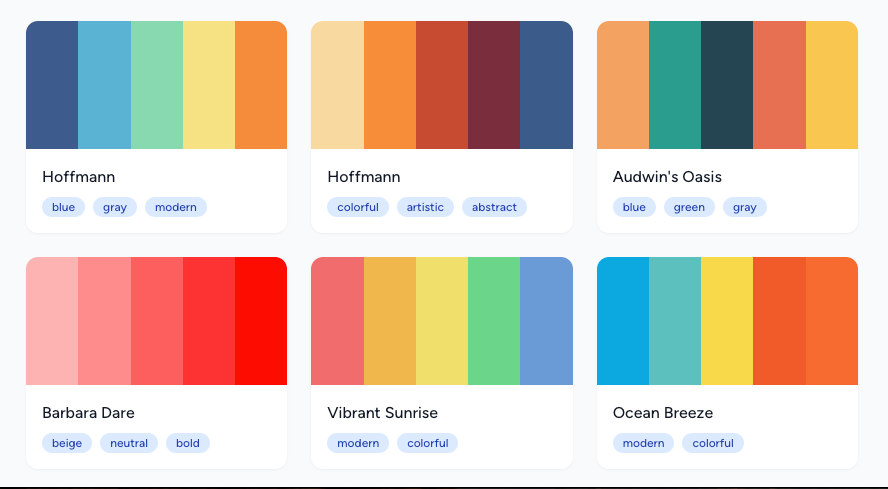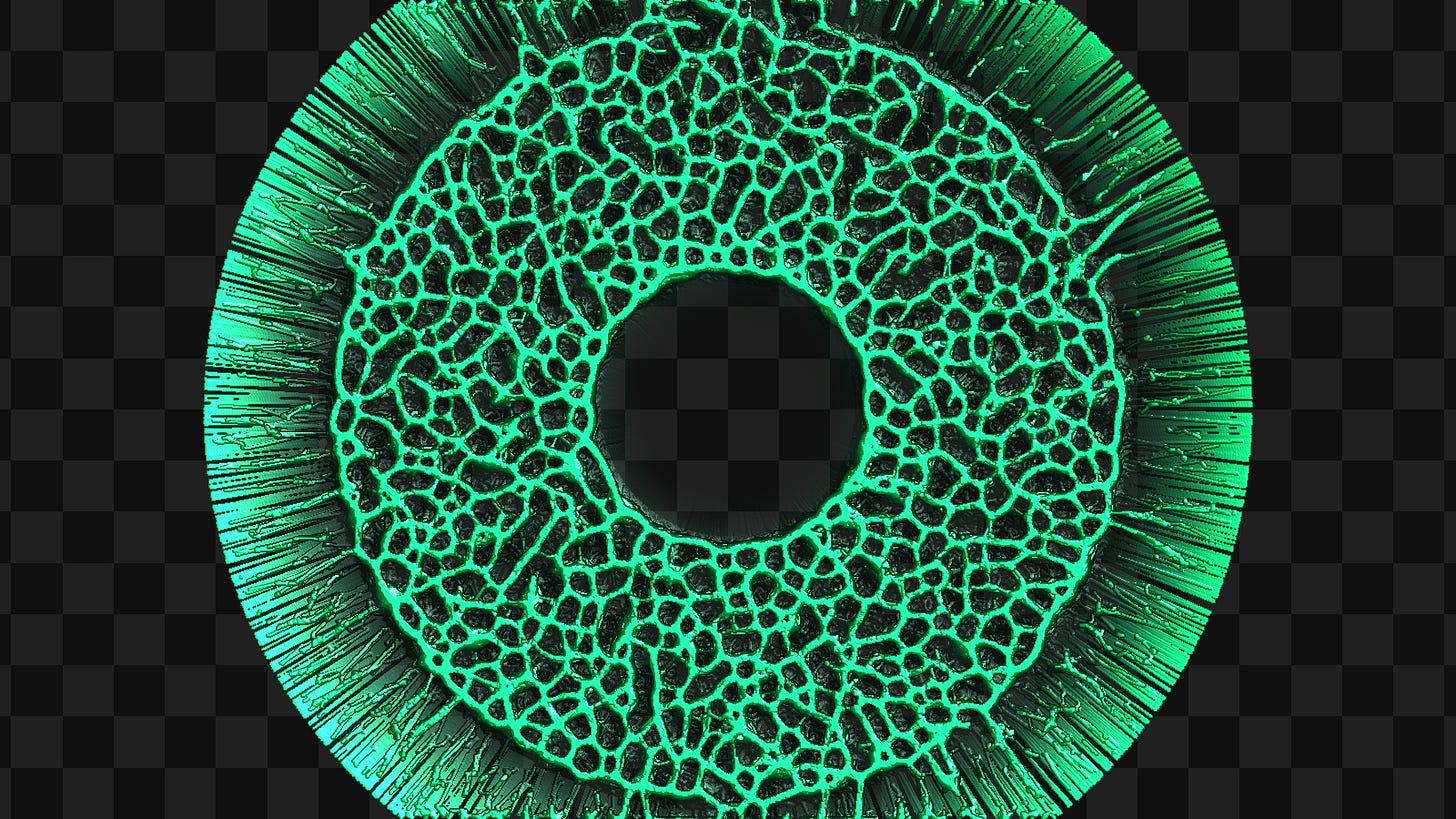2024 Favorites, WebGPU Crash Course, and Speculative Size
#086 Creative Coding / Generative Arts Weekly
Your impact in life is a memory that lives forever thus be creative in positivity. - Oscar Auliq-Ice
Happy New Year! 2024 flew by for me quicker than I thought it would but I can’t really be upset with it. :)
I hope all of you have an inspiring year.
My desire for all of you to continue to be creative and learn. I hope you all to be an effective influence with understanding and patience to those around. I know that life can seem overwhelming and at times upside down. Life is simply change moving forward.
2024 Achievements
Finish a masters program in Data Science from University of Colorado @ Boulder (Go Buffs)
It’s been on my bucket list since college.
Learn some of the tooling in computational design
Spent serious time in Rhino3D, Houdini and Blender to really start figuring out how to create these tools from scratch.
I’m plagued with many interests
Met some of the generative art original generative artists such as Frieder Nake by celebrated the generative art movement
Started my own generative art framework for my own quick iteration called Selkie
Other things I’ve found interesting:
Favorite Fiction: Vagabonds by Hao Jingfang
I appreciated the science fiction of the work. Not only did it have eastern philosophy interweaved within it. It also did a great job at envisioning what multi-planetary civilization could look like.
Favorite Audiobook(s): The Lord of the Rings (Narrated by Andy Serkus)
Narrated by the voice of Gollum in the movies, it is just good to hear his range of characters through his voice and then one who is heavily intertwined into the culture of LOTR it was on point.
Favorite Non-Fiction: The Light Eaters by Zoë Schlanger
As I love new worlds and universes, I find that this book opens up a new world and highlights the great complexities and breadth of life we have yet to understand.
Favorite New TV show: Alone
I appreciated the science fiction of the work. Not only did it have eastern philosophy interweaved within it. It also did a great job at envisioning what multi-planetary civilization could look like.
2025 Goals
Get back to producing art daily.
Working on school, full time job, art, newsletter and just simply playing with new technology did slow down my art making in 2024. I’ll be doing more of it this year.
I’ve been working off and on this year working on 3D printed generative designs that I intend to further work on refining. Details have been spread throughout the last year in the newsletter.
Improve my skills in teaching and creating tutorials
I’ve spent alot of time over the past 6 years reading tutorials, working through samples, and reading code. So I need to start distilling what I have in the back of my mind. One as a practice to continue to learn deeply but also to continue to document the interesting work and methods.
Figuring out what to do next with the newsletter
I love a good long newsletter and so I am not a huge fan of TikTok content though it seems to be what people learn. I think some of it is due to me being an elder millennial I suppose lol. But I also think depth cannot come from quick. However I want to continue spreading the work that is digestible. I have created an audio version of this newsletter using AI so lets see what you think and if it is work pursuing.
Alright, that is enough about me. I hope you all have a great start of the year. Start making some small habits (Atomic Habits is a great read for this).
Much love,
Chris Ried
Genuary2025 is here!
I guess I’ve now been participating for 4 years now in Genuary and always enjoy the challenge. Sometimes I get all of it done. Sometimes very little but it is still a wonderful experience either way.
I’ll be posting my favorites starting next week.
Tutorials & Articles
WebGPU: Compute Shaders Crash Course
This video provides a comprehensive overview of how to utilize WebGPU and compute shaders for machine learning tasks on the web, such as training a simple neural network to recognize handwritten digits. The tutorial covers the essential concepts and tools for working with parallel GPU computations, starting from basic matrix operations and progressing to the implementation of a neural network.
No-engine 2D Rendering in 600 Lines
The tutorial provides a deep dive into creating a 2D game renderer using Odin and Circle, focusing on shaders, vertex buffers, texturing, font rendering, and performance optimization. It emphasizes the importance of understanding low-level graphics concepts and applying them directly to game development rather than building an overly complex engine.
This is just a great opportunity overview.. though it is using Odin which is a newer language from the JangaFX team.
Colorify Rocks
Create stunning color palettes instantly with AI. Enter any keyword or theme to generate the perfect color combination for your project.
Love the design and thought you might enjoy playing with it.
Making a Better Particle Simulation in C++
The speaker successfully builds a particle simulation from scratch, learning key concepts like verlet integration, vector math, and collision detection, while overcoming performance challenges and optimizing the simulation. The process highlights the importance of breaking down complex problems, understanding the physics involved, and applying computational techniques like substepping and grid hashing to improve performance. The project serves as a valuable lesson in real-world programming, moving beyond competitive programming to create interactive simulations.
I am always a fan of using C++. I think there is something about really knowing how something works by building it from scratch.
I Tried Making a Real-Time Painterly
The video demonstrates the creation of a real-time painting shader that’s inspired by van Gogh’s brush strokes and impasto technique. It uses procedural algorithms, color manipulation, and lighting effects to capture the painter’s expressive style. This shader is then applied to games through ReShade, transforming the game footage into an artistic, painterly effect. The process is a cool mix of coding and creativity, showing how technical problem-solving can bring an artistic vision to life.
TouchDesigner Particle SOP
The video walks through creating a dynamic particle effect in TouchDesigner using various techniques to generate a visual display. It begins by creating a sphere and particles and progresses through adding various visual elements like textures, lighting, and forces to create a more dynamic and engaging effect. The shader makes use of noise, forces, and different types of forces like radial and directional forces to animate and interact with particles.
Smaller Than Pixel Art
I started making this video awhile ago, but I ran out of steam half-way through. Nevertheless, I forced myself to finish it. I hope you get something out of it. I also hope that it still applies somewhat to the current state of computer screens, but I may be too out of date.
Fun little video that really is more inspirational.
Spectulative Size: Exploring Perception Through Sound Scaling
This video explores an experiment where the perceived size of an object is influenced by the sound it produces when slowed down. The experiment compares the sounds of two wooden cylinders of drastically different sizes—a large 60 x 3 cm cylinder and a small 4 cm x 2 mm cylinder. The small cylinder is slowed down by a factor of 15 to match the fundamental frequency of the larger one, and the video shows how their sounds evolve when analyzed
More of a technical video, but it is really interesting to see how the pitch of an item changes from one size to another. It is worth the listen. Also, please check out his content as he really dives deep into ultrasonic sound capture and other really fascinating dimensions in sound.
Slime Sim WebGPU
I made this slime mold simulation to learn more about WebGPU and compute shaders. It's essentially a recreation of Sebastian Lague's coding adventure (albiet with fewer features).
I’ve seen very little use of WebGPU in the creative coding community.. but this will be a helpful standard to learn.
Differential Growth using Blender
People have always been attracted to organic forms, as is evidenced by an endless number of various design elements found in human craft and art since prehistoric times; the “Mother Nature” has always been a source of inspiration and symbolism for people throughout the globe. The desire to contemplate and reflect upon the organic processes seems to be an inherent part of human nature.
This is pretty impressive and I would definitely recommend working with this if you are interested in doing work in Blender.
Events
Following are some events across the world that are specific to graphics and coding..
VISIGRAPP 2025: International Joint Conference (Porto, Portugal) - February 26-28
PerGraVAR: Second International Workshop on Perception-driven Graphics and Displays for VR and AR (Saint-Malo, France) - March 8-9
EUROGRAPHICS 2025 (London, UK) - London, UK - May 12-16
GMP 2025 – International Conference on Geometric Modeling and Processing (St. Louis, MO)
If you want to see a more full calendar here I have a page on Notion. I’ll try to keep it up this year.
Website | Instagram | Youtube | Behance | Twitter | BuyMeACoffee





> Spent serious time in Rhino3D, Houdini and Blender to really start figuring out how to create these tools from scratch.
Same!
I replaced the Godot Engine CSG implementation with a geometric kernel from 3d manufacturing.
https://github.com/godotengine/godot/pull/94321